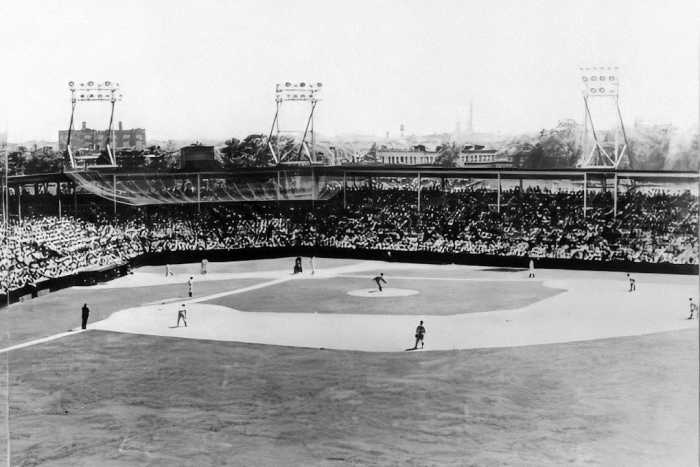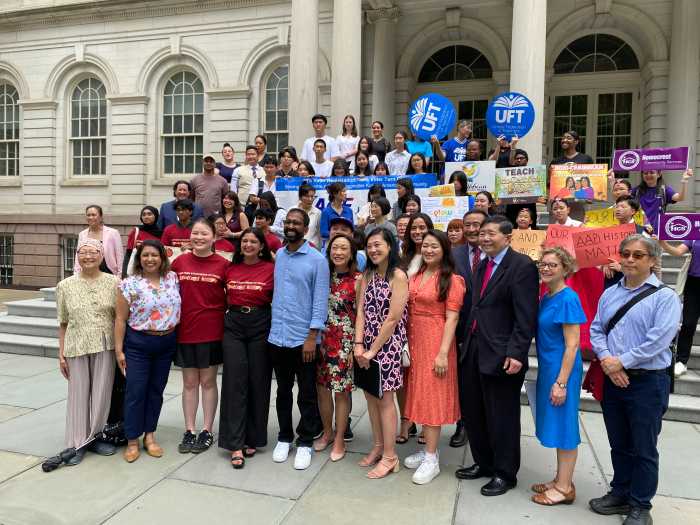By Stephen Witt
Brooklyn Bridge Park may one day be a waterfront playground for city residents and visitors, but for now it is a sifting ground for forensic experts combing through World Trade Center rubble looking for human remains. That was the message that Mayor Bloomberg’s spokesperson Chris Coffey brought to the unveiling of the park’s latest design incarnation at the Manhattan offices of landscape architect Michael Van Valkenburgh Associates last week. “Since December 18, the OEM [Office of Emergency Management] and the Chief Medical Examiner’s Office have been using the former OEM headquarters site at 11 Water Street to sift through potential human remains from the World Trade Center,” said Coffey. Coffey added that all the rubble hauled to 11 Water Street, which is beneath the Manhattan Bridge on the northern end of the proposed park, has been pre-screened so that asbestos and other containments are removed before crossing the river. “We don’t think it affects the park at all. We anticipate it stays on the same construction schedule as it’s currently on,” said Coffey. Coffey said construction of the park is expected later on in the year – between six and nine months from now — and the city doesn’t anticipate any change to the construction center. As for the 11 Water Street site, once the sifting of rubble for human remains is completed, the building will be demolished and the land will become part of a beautiful park, he said. “Brooklyn Bridge Park is part of the mayor’s vision of reclaiming the waterfront in all five boroughs and investing in parkland more so than any administration that I know of,” he said. When asked about what Bloomberg thinks of the luxury housing planned in and around the park to pay for its upkeep, Coffey replied that Bloomberg is building over 180,000 units of affordable housing citywide. “It’s the largest investment in affordable housing in generations, if not ever,” said Coffey. The original OEM headquarters was located in the World Trade Center and was destroyed in the 9/11 terrorist attack. After the attack, it was temporarily relocated to 11 Water Street, the former Purchase Building, until the new permanent site at 165 Cadman Plaza was completed last month. In addition to that site, the city has a secret backup site in case of an emergency. Related to the use of 11 Water Street, Marianna Koval, executive director of the Brooklyn Bridge Park Conservancy, said she asked the city on behalf of the public to reopen nearby New Dock Street so there is pedestrian access to both Empire Fulton Ferry State park and the Brooklyn Bridge esplanade. Koval said she hasn’t heard back from the city yet. In regard to the presentation, Michael Van Valkenburgh Associates Principal Matthew Urbanski led visitors through a tour of a scale model of the park. Urbanski said the basic elements of design remain the same, but the office is now taking all the elements and going into detail and form. Among the details he spoke of is the use of sloping hills to contain excess sound coming off the BQE, and the plan to use natural habitats in the playground and open space portions of the park. “We have an unbelievable park design and to see the continued refinement is really exhilarating. It’s been more than 20 years and we have a really innovative beautiful plan. Let’s get going,” said Koval. “That [scale model] reminds all of us this is a park and it will be one hell of a park,” she added. On the other side of the coin, Judi Francis, who heads the Brooklyn Bridge Park Defense Fund, said the scale model accentuated that there is no separation between the public and private parts of the park. Francis was referring to the proposed five buildings plus 360 Furman Street that will include a hotel and luxury housing that are being proposed to offset the cost of maintaining the park. In particular, Francis maintains that PAL Companies, the developer of 360 Furman Street, is getting a sweetheart deal in paying between $1 and $2 per square foot toward maintenance of the park. They should be paying $5.95 per square foot, said Francis. However, at a recent Community Board 2 Land Use Committee meeting, city, state officials and PAL Companies Principal Robert Levine all testified that the lease deal worked out among the three entities was done in good faith with the city’s attorneys also looking through the deal. But Francis maintains that if the city and state can get more money from Levine, there will be no need to build the other five buildings to sustain the park. “We’ve never wanted to stop the project. Never. We want a park and we’ve wanted a park for 20 years,” said Francis. “Our beef is with the private development in that park. Eliminate the hotel and condos and you’ll have that much more area for a real park,” she added.
































